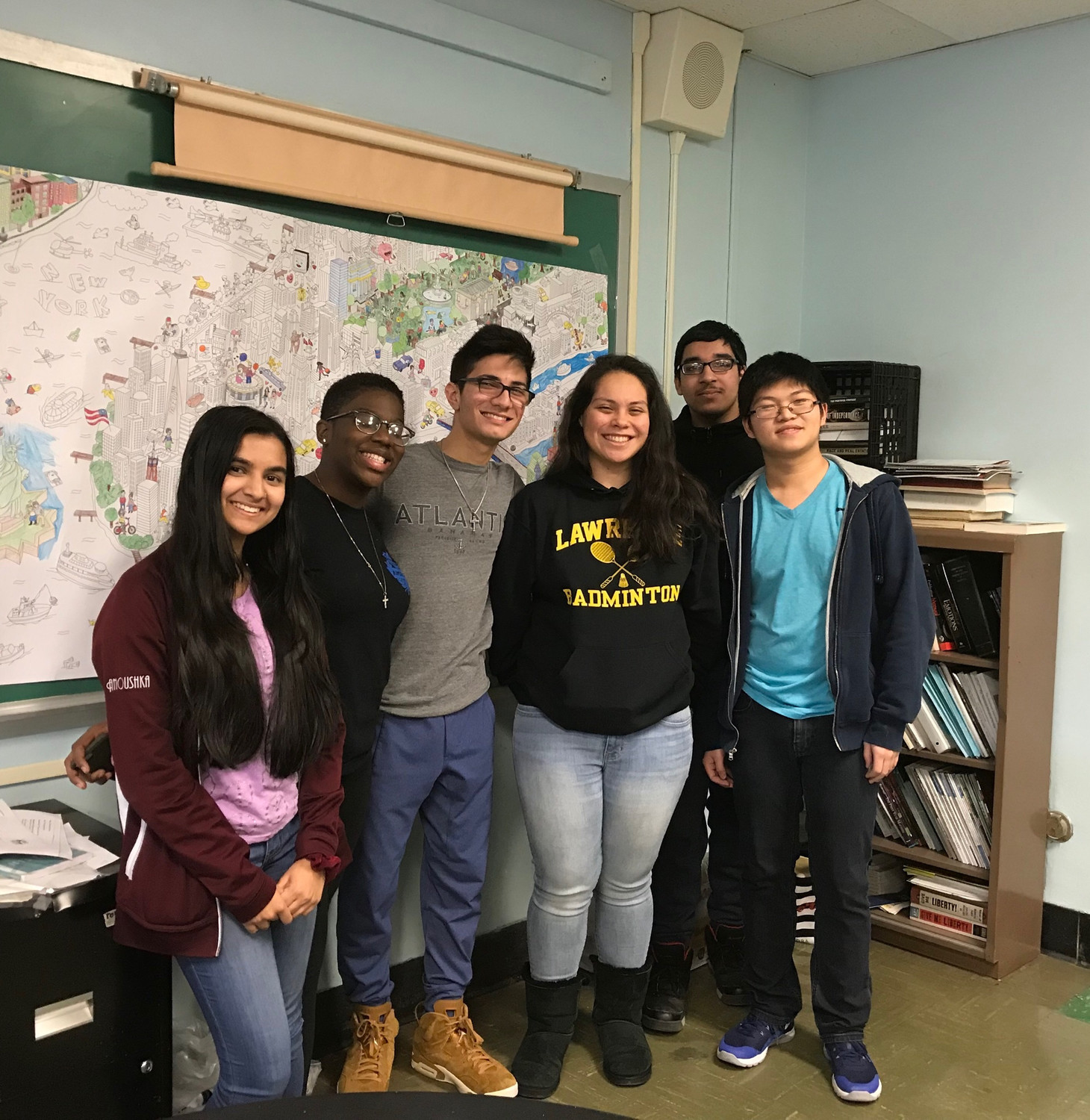Jumpstarting their exponential growth
Four Lawrence High School students, three seniors and a junior, who were assisted in their high-caliber behavioral research by two other juniors, presented at the Greater New York Junior Science & Humanities Symposium at York College on Feb. 4.
The four presenters — Arianna Brown, Anushka Guha, Stacy Portillo and Nicholas Williams — were semifinalists in a competitive program, where less than one-third of more than 200 submissions from across the Long Island are selected. John Chen and Zaiff Khan worked with Guha.
Participants present research in behavioral science, biology, environmental science, medicine, physics and several other categories at the symposium, which is a STEM (science, technology, engineering and math) competition sponsored by the U.S. Army, Navy and Air Force.
Lawrence social studies teacher Dr. Stephen Sullivan mentors several of students and guides them through their projects. He is impressed with their ability to create meaningful questions and think of new concepts to study.
“You would think after three decades of mentoring behavioral science research, the kids would run out of fresh ideas,” Sullivan said “Nope. Lawrence High School’s ‘best and brightest’ remain as imaginative as they are enthusiastic.”
Brown’s research focused on student heritage as a factor influencing performance on and perception of historical reasoning tasks. Guha, Chen and Khan sought to create a novel graphene oxide/iron/poly-lactic acid composite that promotes dental pulp stem cell differentiation and proliferation.
Being the representative of her research team was “a nerve-racking task,” Guha said. “In order to showcase our research to its full potential, I had to read over each and every aspect of the project the night before,” she said. “I carefully examined and re-examined our lab procedures, and the background biology of dental pulp stem cells to prepare for whatever questions the judges may ask. With the help of my mentor, (Lawrence science teacher) Rebecca Isseroff, I was able to create an effective PowerPoint to present our research effectively.”
Guha said that conducting this level of research helped to teach her important skills as “teamwork, determination and how to work in a professional laboratory. It has definitely helped jumpstart my future STEM career.”
Can question wording impact self-reported concern for the environment was what Williams researched. Portillo took a look at whether exposure to muscularity-idealizing images promote self-objectification in adolescent males. Portillo felt right at home in the symposium’s atmosphere. “It was an incredible feeling being able to present my research with other like-minded individuals,” she said.
Sullivan believes that being involved in this type of work can only propel students to future success. “There is something very valuable about providing student researchers with the opportunity to present original research to experts in their chosen academic field,” he said. “Exponential improvement and growth comes from interaction with scholars who critique students’ work and support their ongoing efforts.”






